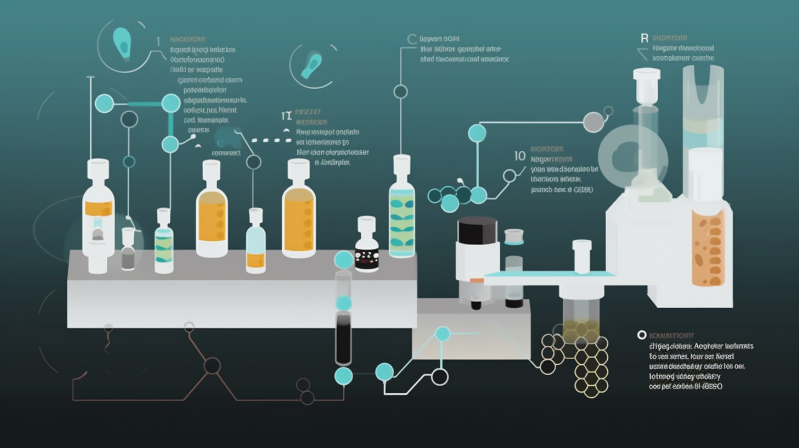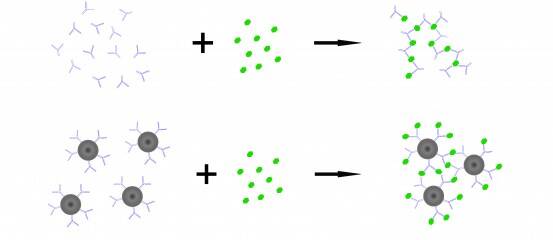
Introduction
Immunoturbidimetry is a laboratory technique used to measure the concentration of specific proteins or other substances in a sample based on the principle of light scattering. It is commonly employed in clinical chemistry and immunology to analyze blood and other bodily fluids.
The technique relies on the interaction between antibodies and antigens. Antibodies are proteins produced by the immune system that bind specifically to target antigens, such as proteins or other molecules of interest. In immunoturbidimetry, specific antibodies are used to detect and bind to the substance being measured.
Here's a general overview of how immunoturbidimetry works:
1. Sample Preparation: The sample (e.g., blood serum or plasma) is collected and prepared for analysis. It may involve separation techniques to isolate the target analyte from other components.
2. Reagent Addition: A reagent containing antibodies specific to the target substance is added to the sample. The antibodies bind to the target analyte, forming immune complexes.
3. Turbidity Measurement: The mixture of sample and reagent is subjected to light scattering. A beam of light is passed through the sample, and the intensity of the scattered light is measured using a turbidimeter or spectrophotometer. The intensity of scattered light is directly proportional to the concentration of the immune complexes formed.
4. Calibration: To determine the concentration of the target substance in the sample, a calibration curve is established. This is done by measuring the turbidity of standards with known concentrations of the analyte. The relationship between turbidity and concentration is determined, and this information is used to calculate the concentration of the analyte in the sample.
5. Data Analysis: The measured turbidity of the sample is compared to the calibration curve, and the concentration of the target substance is determined.
Understanding Immuneturbidimetry and Particle Enhanced Immunoassay (PEIA)
Immuneturbidimetry is a turbidimetric assay method that employs light scattering to estimate the concentration of targeted analytes, including proteins and antibodies. It relies on the fact that when certain substances react with specific reagents, complexes or aggregates form, causing the scattering of light passing through the sample. By measuring the intensity of this scattered light, scientists can determine the concentration of the analyte in question.
In latex particle-enhanced immunoassay, latex particles are coated with specific antibodies that recognize the target analyte. These latex particles act as solid-phase carriers and provide a large surface area for binding with the analyte. When a sample containing the analyte is added to the latex particle suspension, the analyte binds to the antibodies on the latex particles, forming an immune complex. Latex particle-enhanced immunoassays offer several advantages, including high sensitivity, rapid analysis, and ease of automation.


Applications in Clinical Diagnostics
Immunoturbidimetry is widely used in clinical laboratories for the measurement of various proteins, including C-reactive protein (CRP), immunoglobulins, complement factors, and specific drug levels. It is a rapid and relatively simple method for quantifying analytes, making it valuable for diagnosing and monitoring certain diseases and conditions.
1. C-reactive protein (CRP): CRP is an important biomarker associated with inflammation. Immuneturbidimetry allows healthcare professionals to measure CRP levels accurately, aiding in the diagnosis and monitoring of conditions such as infections, autoimmune diseases, and cardiovascular disorders.
2. Immunoglobulins: Immuneturbidimetry enables the quantification of various immunoglobulins, such as IgG, IgM, and IgA. These measurements assist in evaluating immune system function and diagnosing immunodeficiency disorders.
3. Complement components: Complement proteins are crucial in immune response and inflammation. Immuneturbidimetry allows for the measurement of complement components, providing insights into complement-related disorders and certain kidney diseases.
Advantages of Immuneturbidimetry
1. Speed and Automation: This technique provides rapid results, making it highly efficient for high-throughput testing. Automated immuneturbidimetry systems allow for processing a large number of samples with minimal hands-on time.
2.Accuracy and Precision: Immuneturbidimetry provides accurate and reliable quantification of analytes within a wide concentration range. The standardized reagents and calibration procedures enhance precision and reproducibility.
3. Wide Analyte Range: Immuneturbidimetry can measure various analytes, including proteins, antigens, and antibodies, making it versatile for numerous clinical applications.
4. Ease of Use: The technique is relatively simple to perform, and many modern laboratory instruments offer user-friendly interfaces and automated protocols, minimizing the potential for human error.
Conclusion
Immuneturbidimetry has revolutionized the field of clinical diagnostics, enabling rapid and accurate quantification of biomarkers. Its ability to measure proteins, antibodies, and other analytes makes it an invaluable tool in assessing patient health, monitoring diseases, and evaluating treatment efficacy. With its speed, precision, and versatility, immuneturbidimetry continues to play a critical role in advancing medical research and improving patient care.


Add comment
Comments
我需要法拉利,满足我!